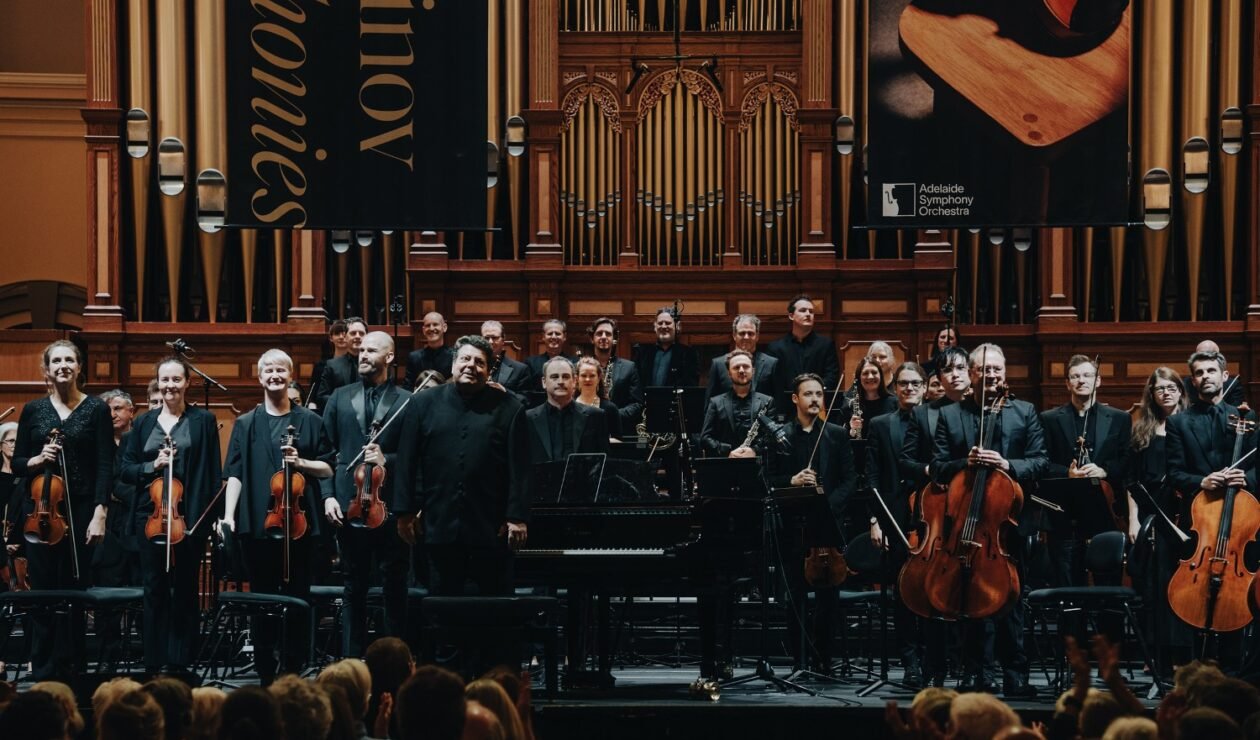Daring and full-flavoured, Andrew Litton’s Rachmaninov is a force to be reckoned with. His accounts of Symphonies 1 and 2 redefine this music, especially when played as magnificently as this by the ASO.
Written by Graham Strahle
Of Rachmaninov’s three symphonies, the second is by far the most performed, the first infrequently so, and the third very rarely. Even rarer still is to hear all three works in close succession, which makes the ASO’s Rachmaninov series under American conductor Andrew Litton especially interesting.
It affords us insights that would not normally occur. Why the great Russian walked away from composing after his disastrous Symphony No. 1, how he reinvented himself 11 years later in Symphony No. 2, and how he confounded critics all over again in Symphony No. 3, are questions that are receiving some tangible answers in this series.
The take-away from last year’s series of the piano concertos with British soloist Stephen Hough and Litton was how they both saw Rachmaninov in a dramatically full-coloured way. There was nothing drifty or dreamy about those wonderful performances.
The qualities Litton brings to the symphonies are in line with that. Rachmaninov always seems to invite voluptuous, emotional performances that err on the lazy or floaty, but there is not a skerrick of that with Litton.
His answer was clear from the outset: apply electrodes to the score and give it the jolt of its life.
Symphony No. 1 in D minor, Op. 13, possesses the gruffest character of all three, but rather than try to smooth it out in the manner of the composer’s later lyrical style, Litton went in boots-and-all with its bold brew of ideas and extremely volatile contrasts. Its seams really show when played like this – a fault Balakirev levelled at Tchaikovsky in Romeo and Juliet – but its excitement is intense.
There are rude shocks in the opening movement, as when the violins screech out abruptly rather like Bernard Herrmann’s score in Psycho’s famous shower scene, only to then commence a nail-biting fugue. Glaringly evident was all this movement’s disjointedness, but also present was its defiant energy.
Certainly this is one way of doing it.
Supercharged playing from the ASO made this symphony, which for decades lay in rest like a corpse after an apparently drunk Balakirev conducted a grossly under-rehearsed premiere in 1897, stand bolt upright.
At the same time, this performance did not sound particularly Russian.
A darker underbelly was not quite present. But here was the vigorous voice of a young man, and that much sounded absolutely right. Rachmaninov was just 23 when he wrote it.
What Litton would do with the larger, expansive Symphony No. 2 in E minor, Op. 27, was the pressing question ahead of the second concert.
Would he relent? Would he allow himself to wallow in its melodic lusciousness?
This work came out differently as well, but in ways that did not surprise. Again the gestures were defiant, the colours fully saturated. Dark clouds immediately gathered with growling lower strings, pungent connecting passages and full force in its lyricism. Everything felt trebled in energy.
To hear the second played like a driven thing and not an escapist fantasy felt disconcerting at first. But what eager directionality it had. One had to get used to Litton’s vision in short time to appreciate and enjoy it, for there were ample rewards.
Nor did things let up in the second movement, which bears a lot in common with his Symphonic Dances. This had great speed and vivacity. It was joyously ripe and emotional, too, helped by judicious additions of portamento in the violins.
Full of daring, this performance was already turning into an odyssey, and the ASO was sounding fabulous. Litton was eliciting quite astounding playing from them.
Then the biggest of all melodies in symphonic literature ascends in the Adagio.
Heralded by gloriously beautiful solo playing from clarinettist Dean Newcomb, this slow movement was a wonder to behold. The strings were sweetly tuned, radiantly glowing, and intoxicating lovely. Larger orchestras can generate a bigger sea of sound than the ASO, but their special togetherness of ensemble was altogether nicer.
The last movement’s jolt of energy confirmed it all: Litton loves this music and his conducting ability is top shelf.
With one notable exception, partnering works in these first two concerts were rather odd.
Finzi’s Eclogue, Op.10, is best left in the cupboard: while it was fascinating to witness Litton’s rhythmic panache at the keyboard in this concerto-like piece, it is a barren and workaday. Gershwin’s Rhapsody in Blue was so much better, but even with the enormous flair he brought to this as conductor, it likewise felt a million miles from Rachmaninov.
In the second concert, Prokokofiev’s Third Piano Concerto felt far more appropriate to the series, and Konstantin Shamray’s account of this as soloist materialised as the performance of a lifetime.
Audiences have long known how he excels with the Russians, and indeed he performed this very concerto at the 2008 Sydney International Piano Competition, which he won.
Lesser pairs of hands can lose musical sense amid its virtuosic fireworks, even if they get the notes right. But Shamray rose above all its demands with pianism that was as insightfully profound as it was astonishingly dazzling. With the ASO keenly by his side, we had here the stamp of total authority.
This is a review of the first two concerts on 22 and 26 June. The last concert, featuring Symphony No. 3, will be on 29 June.

